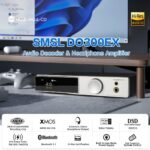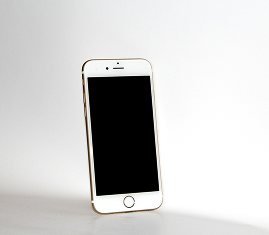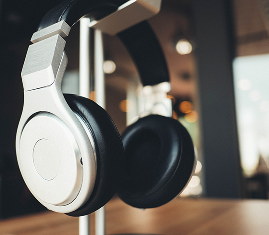Hey there! Have you ever wondered how noise-canceling headphones compare to regular ones? Well, in this article, we’ll dive into the world of headphones and explore the differences between these two types of headphones. Whether you’re a music lover or just someone who enjoys a good podcast, understanding the pros and cons of noise-canceling headphones versus regular ones can help you make an informed decision about choosing the perfect pair for your listening needs.
Curious to learn more? Stay tuned as we delve into the various features, sound quality, comfort, and price range of noise-canceling and regular headphones. By the end of this article, you’ll understand which type of headphones may be the best fit for you. Whether you prioritize noise cancellation, audio clarity, or affordability, we’ll provide a comprehensive comparison to ensure you make the right choice. So, let’s get ready to dive into the world of headphones, shall we?

Overview
Explanation of noise-canceling headphones
Noise-canceling headphones are a type of headphones that are specifically designed to provide high-quality sound while eliminating external noise. These headphones use advanced technology to analyze the ambient sound and generate an opposite sound wave to cancel out the noise. This creates a serene listening experience, allowing you to immerse yourself in your music or audio without distractions.
The noise-canceling feature in headphones is handy in environments with high background noise, such as airplanes, trains, or busy streets. By reducing the external noise, these headphones allow you to enjoy your audio at lower volumes, ultimately reducing the risk of long-term hearing damage. The noise cancellation feature can also benefit individuals who work in noisy environments and need to focus on their tasks.
Explanation of regular headphones
On the other hand, regular headphones do not have the noise-canceling feature. They are designed to provide a straightforward audio listening experience without additional noise reduction technology. These headphones are widely available in the market and come in different styles, including over-ear, on-ear, and in-ear options. While they may lack advanced noise-canceling technology, regular headphones can still deliver excellent sound quality, depending on the brand and model.
Sound Quality
Comparison of sound quality in noise-canceling headphones
Regarding sound quality, noise-canceling headphones are known for their exceptional performance. These headphones are engineered to deliver an immersive audio experience with crisp highs, well-defined mids, and deep bass. The noise cancellation feature further enhances the sound quality by eliminating external noise that might interfere with the audio clarity. This means you can fully appreciate the nuances and details in your favorite music tracks or movies without distractions.
Comparison of sound quality in regular headphones
Regular headphones also offer good sound quality, varying depending on the brand and price range. High-end regular headphones can provide a similar level of audio fidelity as noise-canceling headphones, especially if equipped with high-quality drivers and components. However, regular headphones do not have the noise cancellation feature, which means external noise can still affect the overall sound experience, especially in noisy environments.
Noise Cancellation
Detailed explanation of noise cancellation in headphones
Noise cancellation in headphones involves sophisticated technology that actively reduces external noise. These headphones use tiny microphones to pick up the ambient sound and generate an opposing sound wave that cancels out the unwanted noise. This technology is particularly effective in reducing low-frequency sounds, such as the hum of an airplane engine or the rumble of a train.
The noise cancellation feature in headphones can be adjusted or turned off, depending on your preference. This allows you to switch between total immersion in your audio or being aware of your surroundings in certain situations. However, it is essential to note that noise-canceling headphones might not eliminate all noise, especially if it is sudden or unpredictable.
Detailed explanation of noise cancellation in regular headphones
Regular headphones do not have active noise cancellation technology. As a result, they rely solely on the physical design and material to passively block out external noise. Over-ear headphones, for example, create a seal around your ears to minimize the ingress of ambient sounds. On the other hand, in-ear headphones use ear tips to create a snug fit and provide some noise isolation.
While regular headphones can reduce some external noise, they are less effective than noise-canceling headphones in truly eliminating unwanted sounds. This is especially noticeable in environments with high noise levels, where the passive noise isolation of regular headphones might not suffice.
Comfort
Comparison of comfort in noise-canceling headphones
Comfort is essential when choosing headphones, as you’ll likely be wearing them for extended periods. Noise-canceling headphones often prioritize comfort by using plush ear cushions and ergonomic designs. The ear cups are typically large enough to fully enclose your ears, providing a comfortable fit and minimizing pressure points. The headband is also well-padded to distribute the weight evenly and reduce discomfort during long listening sessions.
Comparison of comfort in regular headphones
Regular headphones also come in various designs with different levels of comfort. On-ear headphones rest on the ears, while over-ear headphones envelop the entire ear. Over-ear headphones are generally considered more comfortable as they distribute the weight more evenly and don’t put direct pressure on the ears. However, comfort can still vary depending on the specific model and how well the headphones are designed to fit different head shapes and sizes.
Price
Comparison of price between noise-canceling headphones and regular ones
Regarding price, noise-canceling headphones are generally more expensive than regular headphones. The advanced technology and high-quality components used in noise-canceling headphones contribute to their higher cost. Additionally, the added noise-canceling feature also increases the price. On the other hand, regular headphones are available at a wide range of price points, from budget-friendly options to high-end models.
While noise-canceling headphones may seem more expensive, they offer a superior audio experience and the ability to enjoy your audio without distractions. If sound quality and noise cancellation are top priorities, investing in a pair of noise-canceling headphones is worth considering.
Battery Life
Comparison of battery life in noise-canceling headphones
Noise-canceling headphones require power to operate the noise-cancellation feature. A built-in rechargeable battery typically provides this power. The battery life of noise-canceling headphones can vary depending on the specific model, usage, and noise-canceling settings. On average, most noise-canceling headphones offer around 20 to 30 hours of playtime with noise cancellation enabled.
Comparison of battery life in regular headphones
Regular headphones, particularly those without active noise cancellation, do not require a built-in rechargeable battery. They can be powered by the device they are connected to, such as a smartphone or laptop. As a result, the battery life of regular headphones is not a concern, as it depends on the device’s battery life. However, if you use wireless regular headphones, they will have their own built-in battery, which will vary in playtime depending on the model.
Durability
Comparison of durability in noise-canceling headphones
Noise-canceling headphones are often built with high-quality materials and superior craftsmanship, contributing to their durability. These headphones are designed to withstand everyday use and are built to last. The headband is usually reinforced with metal or high-strength plastic, ensuring it can resist bending and twisting without breaking. The ear cups are also made with durable materials that can tolerate regular wear and tear.
Comparison of durability in regular headphones
Regular headphones vary in terms of durability depending on the brand and model. Higher-end regular headphones are typically built with better materials and construction, making them more durable. Cheaper models may use lower-quality materials, such as flimsy plastic, which can make them more prone to damage. However, regular headphones that are well cared for can still provide years of reliable use.
Features
Comparison of additional features in noise-canceling headphones
In addition to noise cancellation, noise-canceling headphones often offer various additional features. Some models come with built-in microphones for hands-free calling or voice assistant integration. Others include wireless connectivity through Bluetooth, allowing you to enjoy your audio without the hassle of tangled cables. Some noise-canceling headphones also feature touch controls, allowing you to easily adjust volume, skip tracks, or answer calls with a simple gesture.
Comparison of additional features in regular headphones
Regular headphones can also include additional features depending on the brand and model. These features may include in-line playback and volume adjustment controls, detachable cables for easy replacement, or even active sound enhancement technology. However, it is essential to note that regular headphones typically do not have built-in noise cancellation or some of the more advanced features of noise-canceling headphones.
Versatility
Comparison of versatility in noise-canceling headphones
Noise-canceling headphones are versatile in their ability to adapt to different environments. The noise cancellation feature allows you to enjoy your audio even in noisy settings, making them ideal for travel or public spaces. Additionally, many noise-canceling headphones offer wired and wireless connectivity options, giving you the flexibility to choose your preferred method of use.
Comparison of versatility in regular headphones
Regular headphones, especially those with wired connectivity, are also versatile in terms of compatibility. They can be used with various devices, such as smartphones, tablets, laptops, and audio players. However, regular headphones without noise cancellation may not be as versatile in environments with high background noise, as the external noise can interfere with the audio quality.
Conclusion
In conclusion, noise-canceling headphones offer several advantages over regular headphones, including superior sound quality, active noise cancellation, and additional features. These headphones provide an immersive audio experience that allows you to enjoy your music, movies, or podcasts without distractions. While noise-canceling headphones may come at a higher price point, the investment is well worth it for those seeking a premium audio experience.
On the other hand, regular headphones still provide a great listening experience, especially if noise reduction is not a top priority. They are available at various prices and cater to different preferences and budgets. Ultimately, choosing between noise-canceling headphones and regular ones will depend on your needs, priorities, and budget. So, whether you are a casual listener or looking for the best sound experience, headphones can meet your needs.










